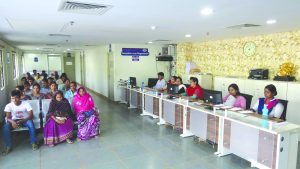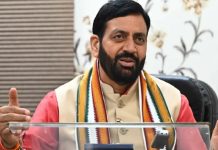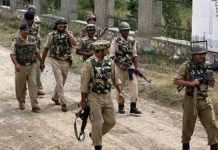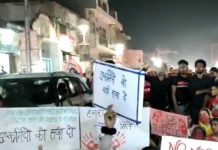 An average household medical expenditure, excluding childbirth, during hospitalisation at private hospitals was seven times more expensive than that of government hospitals in India during July 2017-June 2018, according to a survey by National Statistical Office (NSO). “In government/public hospitals, the expenditure was about 4,452 (about 4,290 in rural and 4,837 in urban areas). In private hospitals, the expenditure was about 31,845 (about 27,347 in rural and 38,822 in urban areas),” stated NSO’s 75th round of National Sample Survey (NSS) on Household Social Consumption related to Health during the period July 2017 to June 2018.
An average household medical expenditure, excluding childbirth, during hospitalisation at private hospitals was seven times more expensive than that of government hospitals in India during July 2017-June 2018, according to a survey by National Statistical Office (NSO). “In government/public hospitals, the expenditure was about 4,452 (about 4,290 in rural and 4,837 in urban areas). In private hospitals, the expenditure was about 31,845 (about 27,347 in rural and 38,822 in urban areas),” stated NSO’s 75th round of National Sample Survey (NSS) on Household Social Consumption related to Health during the period July 2017 to June 2018.
The average medical expenditure per hospitalisation case was about 16,676 in rural, 26,475 in urban India, it added. The present survey included data from over 1.13 lakh households. Prior to this, there have been three such surveys carried out in 1995-96, 2004 and 2014. The data showed that government/public hospitals accounted for 42 per cent of the in-patient hospitalisation (excluding childbirth). Private hospitals accounted for 55 per cent and charitable/trust/NGO-run hospitals accounted for 2.7 per cent of such cases.
The report said the average expenditure per hospital childbirth was about 2,404 in rural India, and 3,106 in urban areas for government hospitals. It was about 20,788 in rural and 29,105 in urban for private hospitals, it added. Surgery was done in about 28 per cent of hospital childbirths in India, as per the report. Interestingly, only about 17 per cent of childbirths in government hospitals were surgery cases, of which over 92 per cent were provided free. In private hospitals, about 55 per cent of childbirths were surgery cases and only 1 per cent was provided free.
Very few doctors
A separate government report has pointed out that there is only one allopathic government doctor for every 10,926 people in India against the WHO’s recommended doctor-population ratio of 1:1000. Compiled by the Central Bureau of Health Intelligence (CBHI), the National Health Profile, 2019, stated that the number of registered allopathic doctors possessing recognised medical qualifications (under the MCI Act) and registered with state medical councils for 2017 and 2018 was 43,581 and 41,371, respectively. “At present, an average population served by a government allopathic doctor is 10,926,” the report said.
The report, however, highlighted that there has been a marked improvement in the number of dentists. The number of dental surgeons registered with the central/state dental councils up to December 31, 2018, was 2,54,283. There has been a steady rise in the number of registered AYUSH doctors in India from 7,73,668 in 2017 to 7,99,879 in 2018.
AYUSH has the maximum number of registered ayurvedic doctors (55.47 per cent) followed by registered homeopathy doctors (36.69 per cent) in India. There is an increase in the availability of allopathic medical practitioners, dental surgeons and nurses per lakh population over the years.
The report further states that the cost of treatment has been on the rise in India and it has led to inequity in access to health care services. “India spends only 1.28 per cent of its GDP (2017-18) on health. Per capita public expenditure on health in nominal terms has gone up from 621 in 2009-10 to 1,657 in 2017-18. The Centre-state share in total public expenditure on health was 37:63 in 2017-18,” it said.
The report highlighted that health insurance was a growing segment in the country, even as it hasn’t taken off fully and several measures are needed to improve and expand the insurance coverage. The advent of private insurers in India saw the introduction of many innovative products like family floater plans, top-up plans, critical illness plans, hospital cash and top-up policies, it said.
The Ayushman Bharat Mission-National Health Protection Mission or the Pradhan Mantri Jan Arogya Yojana (PMJAY) — world’s largest health scheme announced in the Union Budget 2018-19 — is the latest initiative in expanding the health insurance net and targets 10 crore poor and deprived rural population, the report stated. The mission aims to provide a cover of 5 lakh per family per year for secondary and tertiary care procedures.
Based on the health survey (71st round) conducted by the NSSO, an average medical expenditure incurred during stay at hospital from January 2013 to June 2014 was 14,935 for rural and 24,436 for urban in India.
Govt expenditure
The government’s expenditure on health services has increased continuously over the years and the target is to raise it to 2.5 per cent of the country’s GDP by 2025, Health Minister Harsh Vardhan recently told the Rajya Sabha.
He said the experience of last 10 years shows that with every passing year, the public expenditure on health services is “continuously increasing”. The minister informed that the National Health Policy 2017 envisages increasing the public health expenditure to 2.5 per cent of the GDP by 2025.
The policy recommends that State governments should spend more than 8 per cent of their budget on the health sector by 2020. Replying to supplementaries, the minister said the government proposes to set up 1.5 lakh health and wellness centres by 2022 under the Aayushman Bharat programme. Of this 18,000-19,000 have already been established, he said. These centres will boost healthcare facilities in the rural as well as Urban areas.
In a written reply, Vardhan said the government announced 4 per cent health and education cess in place of 3 per cent education cess on personal income tax and corporation tax to cater to the education and health needs of poor and rural families. In addition, he said the Higher Education Funding Agency (HEFA) has started supporting the infrastructure works of medical institutions.
letters@tehelka.com













